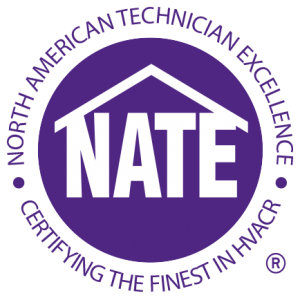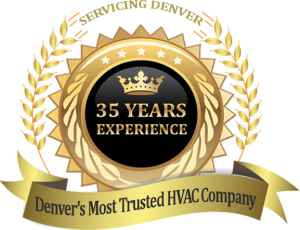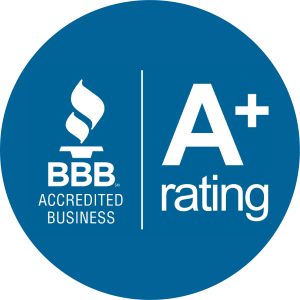Muli-Zone HVAC Explained For Property Managers
For commercial property managers overseeing multi-tenant buildings, office suites, retail complexes, or mixed-use spaces in Denver, one of the biggest challenges is maintaining consistent comfort and energy efficiency across zones with very different needs. That’s where multi-zone HVAC systems come into play. These systems allow you to manage different temperatures and airflow for specific areas or zones within the same building—making your operations more flexible, cost-effective, and tenant-friendly.
At L & L Heating and Air Conditioning, we specialize in helping property managers implement and maintain HVAC systems that align with commercial demands. If you’re new to zoning or considering an upgrade, here’s what you need to know about multi-zone HVAC systems and how they can improve your building’s performance.
What Is a Multi-Zone HVAC System?
A multi-zone HVAC system divides a building into separate “zones,” each with its own thermostat and climate controls. These systems can be configured with one centralized unit or multiple connected units and are ideal for buildings with varied layouts or different usage patterns.
Each zone’s heating or cooling needs are managed independently, meaning one suite can be cooled while another is heated—or turned off entirely if unoccupied. These systems are commonly used in:
- Office buildings with multiple tenants
- Retail spaces with distinct storefronts
- Medical and dental offices with treatment and waiting rooms
- Educational, religious, or municipal buildings
- Light industrial facilities with both work and administrative zones
Zoned systems provide greater control, reduce unnecessary energy consumption, and deliver a better occupant experience.
How It Works
Zoned HVAC systems use a network of dampers, thermostats, and controllers to direct air to the right places at the right times. Here’s a simplified breakdown of the components:
- Central HVAC unit or multiple mini-splits provide heating/cooling
- Motorized dampers in the ductwork open or close based on demand in each zone
- Thermostats placed in each zone allow customized temperature settings
- The zone control panel coordinates communication between thermostats and dampers
When a tenant in Suite A lowers their thermostat, only the dampers connected to that zone adjust, without affecting the rest of the building. This level of control is especially helpful in Denver buildings that experience sun exposure, altitude-driven temperature differences, or irregular occupancy schedules.
Benefits for Commercial Property Managers
For property managers, the return on investment with multi-zone HVAC goes beyond tenant comfort. It supports operational efficiency and simplifies service workflows in several key ways:
Improved Tenant Satisfaction
Temperature complaints are among the most common issues in commercial property management. A zoned system gives tenants more direct control, reducing complaints and fostering positive landlord-tenant relationships.
Energy Efficiency and Cost Savings
Heating or cooling unused areas wastes energy. Zoning allows you to shut off conditioning in vacant suites or low-traffic areas without disrupting the rest of the building. Over time, this translates to lower energy bills and reduced wear on equipment.
Easier Maintenance and Troubleshooting
When a system is divided into zones, diagnosing issues becomes easier. If one area is experiencing a problem, technicians can narrow their focus to that zone—reducing downtime and service costs.
Increased Equipment Lifespan
By distributing demand across multiple zones and running equipment more strategically, you can reduce strain on the system. This leads to longer equipment life and fewer emergency repairs.
Flexible Tenant Turnover
With separate zone controls, you can make quick adjustments for new tenants without needing a full system overhaul. This flexibility is particularly valuable for managing short-term leases or pop-up retail environments.
Ideal Scenarios for Multi-Zone HVAC
Zoning is not one-size-fits-all. It’s especially beneficial in:
- Buildings with multiple occupancy schedules (offices during the day, cleaning crews at night)
- Structures with varying sun exposure or insulation (south-facing windows, older construction)
- Multi-use spaces combining retail, storage, or office functions
- Tenants with specific temperature requirements, such as clinics or salons
- Properties where sub-metering HVAC usage is important for billing or tenant cost control
L & L Heating and Air Conditioning can assess your property and recommend the best zoning configuration based on layout, usage, and tenant needs.
Can Existing Buildings Be Zoned?
Yes—multi-zone systems aren’t limited to new construction. Many existing buildings can be retrofitted for zoning by modifying ductwork, installing smart dampers, and upgrading thermostats. While retrofits require a careful review of space and infrastructure, they’re often a more affordable and energy-saving alternative to replacing an entire system.
For properties using ductless mini-split systems, zoning is already built in, as each indoor unit functions as its own zone. These setups are great for retrofit projects or spaces where ductwork is limited.
Technology Integration and Smart Controls
Modern multi-zone systems are increasingly integrated with smart thermostats and building automation systems (BAS). These allow you to manage zones remotely, receive system performance alerts, and even schedule heating or cooling based on tenant leases or business hours.
Systems like Honeywell, Ecobee for Business, or Trane’s building management platforms give property managers full visibility into HVAC performance—ideal for proactive maintenance and energy reporting.
Getting Started with Multi-Zone HVAC in Denver
If you’re managing commercial properties in Denver, you understand how quickly the local climate can shift—and how essential it is to keep your tenants comfortable without overworking your equipment. A professionally designed multi-zone HVAC system helps you deliver personalized climate control with a more efficient and adaptable approach.
At L & L Heating and Air Conditioning, we specialize in commercial HVAC strategy, installation, and maintenance for property managers. From system design to performance monitoring, we help you manage your building more effectively—with fewer complaints, lower costs, and greater control.
Contact us today to schedule a zoning consultation and learn how a custom multi-zone HVAC solution can simplify your property management.





Read Our Reviews

Serving Front Range Denver from Arvada to Monument
Arvada
Aurora
Boulder
Brighton
Broomfield
Castle Pines
Castle Rock
Centennial
Cherry Hills Village
Commerce City
Denver
Edgewater
Elizabeth
Englewood
Evergreen
Foxfield
Franktown
Glendale
Golden
Greenwood Village
Highlands Ranch
Ken Caryl
Lafayette
Lakewood
Larkspur
Littleton
Lone Tree
Longmont
Louisville
Morrison
Northglenn
Parker
Roxborough Park
Sedalia
Sheridan
Thornton
Westminster
Wheat Ridge



